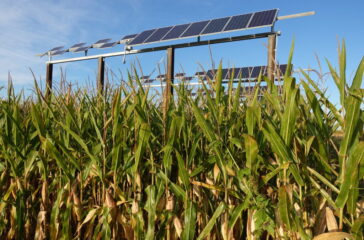Across the Midwest, farmers are turning to solar to boost profits
Grace van Deelen
In a corner of southwestern Wisconsin, in a town called Eden, Bob Bishop spends his days farming land that has been in his family since the 1940s. He manages about 2,000 acres— some is pasture for his cattle, some is seeded with corn and soybeans. But 40% of his acreage, as he likes to say, will soon be farming the sun.
 EWG
EWG